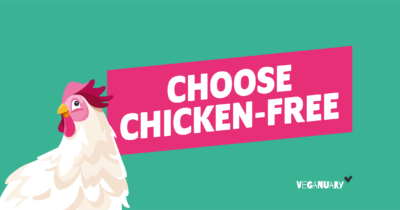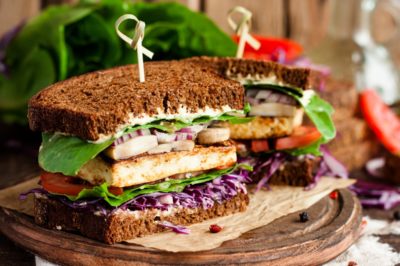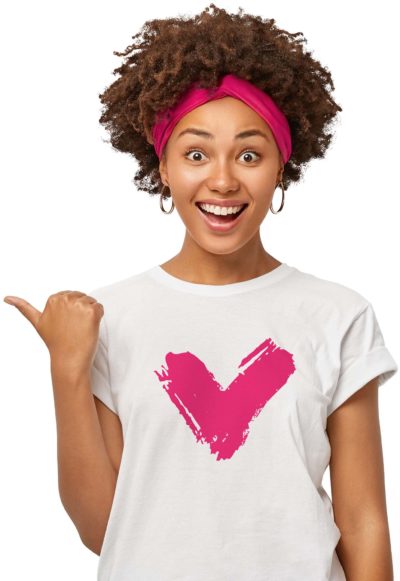Is dairy farming cruel to cows? Learn the truth about the dairy industry in this blog

Cows possess many of the same emotional qualities as we do and, like people, some cows are playful, cheeky, and outgoing, while others are more sensitive, thoughtful, and shy.
All are capable of happiness, though, and cows literally jump for joy when given reason to. But on dairy farms, cows suffer both physically and emotionally.
How do cows live naturally?
Cows thrive on social interaction and form close and long-lasting relationships with members of their herd. Semi-wild cattle will groom and graze together, share food, and coordinate activities.
For females, the closest and strongest bond they form is with their calf. When about to give birth, the mother will take herself away from the herd for privacy – something that many farmed animals crave but few get to experience.
Later, when she is ready, she will return and formally introduce her newborn to the herd. Her calf will stay with her and nurse for 9-12 months before being weaned.
In captivity, none of this happens.
What is life like on dairy farms in the US?
There is a common misconception that cows always produce milk, and that milk production is a painless process.
However, like all female mammals, cows must be pregnant to produce milk which they make specifically to feed their young. Instead of suckling for a year, the calf is taken away within 24 hours of birth, to stop them from drinking all that valuable milk.

This separation is traumatic for both mother and calf. They will call for one another, sometimes for days, with mothers pacing back and forth, searching for a way to be reunited with their young.
If the calf is female, she will one day join the herd and be put through the same cycle of invasive artificial insemination, pregnancy, birth, and separation. If male, his future is less sure.
What happens to male calves?
Male calves cannot grow to produce milk, and often they are not a breed that gains enough muscle to be profitably fattened for slaughter.
Millions of male calves are sold to be raised and slaughtered for beef, while hundreds of thousands of others are raised for veal. While many people consider veal production to be cruel, too few understand that veal production and the dairy industry depend on each other.

As for the mother, she will be pushed to her biological limits, will lose calf after calf, and will be milked until she is worn out, or ‘spent’ as the industry calls it, and her productivity declines.
Then, she will be sent to slaughter. She could have lived 15-20 years, but she will be killed at just five or six, and her body made into low-grade meat products like cheap hamburger.
Is the dairy industry natural?
People often think that cows on dairy farms have a lovely life because they have seen some in fields. In reality, the typical cow farmed for milk in the United States will spend her entire life inside a concrete-floored enclosure.
Cows used in the dairy industry are bred to produce large quantities of milk – around 10 times more than necessary to feed a calf. The weight of this excess milk distends their udders, causing teat infections and contributing to lameness.
These two conditions, along with infertility, are the main reasons why thousands of cows are sent to slaughter each year at an even younger age than they otherwise would be.

What is mastitis?
Mastitis is a bacterial infection of the udder that causes painful swelling or hardening. It is frequently attributed to unhygienic, cramped, and poorly ventilated living conditions. The USDA suggests that at least 1 in 4 cows in the US dairy industry suffer from mastitis, making it a very costly disease. [1]
Milk from infected cows has a much higher somatic cell count. When a cow is infected, more than 90 percent of the somatic cells in her milk are ‘neutrophils’, the inflammatory immune cells that form pus.[2]
With mastitis so prevalent in cows, there is no way to avoid it, and the legal limit for human consumption is 750,000 cells/mL. [3]
Why do cows suffer with lameness?
Lameness is commonplace in dairy herds. It is caused by infections such as laminitis and compounded by poor nutrition and long periods standing on hard floors.
It is difficult to comprehend the pain of laminitis but John Webster, Emeritus Professor at the University of Bristol, likened it to us having our fingernails crushed in a door, and then having to stand on those fingertips for hours.[4]
How are cows slaughtered in the US?
Whether they are raised for beef or dairy, all cows end up at the slaughterhouse. Most cows in the US are stunned with a pistol-like captive bolt gun to the brain, then are shackled, hoisted, and have their throats cut before being disemboweled and skinned.
Investigations have shown that stunning often fails and cows endure repeated shots to the head or go to the knife while still conscious. The fear they experience is all too clear to see.
It doesn’t need to be this way, and we all have the power to prevent this cruelty. There are many delicious dairy alternatives available in the US, from chocolate and desserts to cheese. For support with ditching dairy, check out our Choose Dairy-Free campaign.
References
[1] USDA (2016). Dairy 2014: Milk Quality, Milking Procedures, and Mastitis on U.S. Dairies. [online] USDA. Available at: aphis.usda.gov [Accessed 15 Aug 2023].
[2] Greger M.D. FACLM, M. (2011). How Much Pus is There in Milk? [online] NutritionFacts.org. Available at: nutritionfacts.org [Accessed 15 Aug 2023].
[3] USDA (2018). Determining U.S. Milk Quality Using Bulk-Tank Somatic Cell Counts, 2017. [online] USDA. Available at: aphis.usda.gov [Accessed 15 Aug 2023].
[4] Webster, J. (2005). Animal Welfare: Limping Towards Eden. Oxford, UK Blackwell Publishing Ltd.
[5] American Veterinary Medical Association (2014). Welfare Implications of Castration of Cattle. [online] American Veterinary Medical Association. Available at: avma.org [Accessed 15 Aug 2023].
PAGE UPDATED AUGUST 2023










